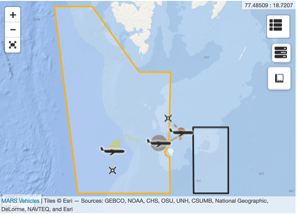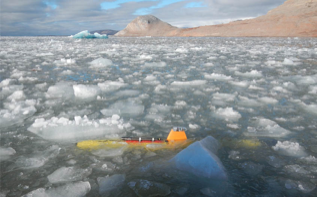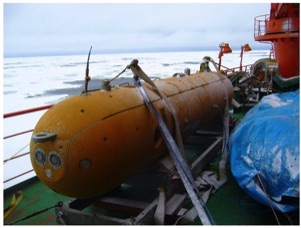The Nine Maritime Zones
The following brief descriptions of the nine Maritime Zones have been condensed from the comprehensive material in Volume Two of 'The Operation of Autonomous Underwater Vehicles Series' written by academic and practicing lawyers Prof E D Brown and Prof N J J Gaskell, published by the Society for Underwater Technology in 2000. The UN has a useful (though unofficial) Table of claims by country for the Zones listed below.
Zone 1 Internal Waters
The Coastal State has full sovereignty over Internal Waters, all waters landward of the baseline of the Territorial Sea.
Zone 2 Archipelagic Waters
The set of rules appertaining to Archipelagic Waters arose out of UNCLOS Part IV, under which there are detailed rules to qualify as an 'Archipelagic State'. The Archipelagic State has sovereignty over these waters, but foreign shipping has rights of innocent passage. Innocent passage does not cover the undertaking of research or commercial activity and so AUV operations would need consent. Baumert and Melchior (2015) list the 20 states that have claimed Archipelagic Waters finding 13 to be consistent with the requirements.
Zone 3 Territorial Sea
The Archipelagic State has sovereignty over these waters, but foreign shipping has rights of innocent passage. Innocent passage does not cover the undertaking of research or commercial activity and so AUV operations would need consent. Under Article 3 of UNCLOS a state may claim a maximum breadth of 12 nautical miles (nm) for its Territorial Sea. Most claim 12 nm, Greece only claims 6nm while several nations claim Territorial Sea designation out to 200 nm.
Zone 4 Contiguous Zone
Under Article 33 of UNCLOS a state may put controls in place on certain activities in a contiguous zone extending to a maximum breadth of 24 nm from its Territorial Sea baseline. These controls do not affect marine scientific research or commercial or defence activities, the practices relating to the Exclusive Economic Zone apply in the Contiguous Zone. [The activities with controls relate to customs, immigration, sanitation and such like].
Zone 5 Exclusive Fishing Zone
UNCLOS does not recognise Exclusive Fishing Zones but it is a concept that has been acknowledged by the International Court of Justice. The UN Table of claims does list Fisheries Zones claimed by countries. For a number of countries the breadth is equal to the Exclusive Economic Zone (200 nm). Relevant to this guide is Denmark, which claims a 200 nm Fisheries Zone for Greenland and the Faroe Islands. In an Exclusive Fishing Zone it is possible that AUV operations in any way connected with Fisheries could be proscribed; specialist advice should be sought.
Zone 6 Exclusive Economic Zone
An Exclusive Economic Zone (EEZ) may not extend beyond 200 nm from the Territorial Sea baseline. A coastal state has jurisdiction with regard to marine scientific research in the EEZ, while the state has sovereign rights over, "exploring and exploiting, conserving and managing the natural resources, whether living or non-living ...". This implies different rules for research and commercial activity.
The detailed rules for marine scientific research within a state's EEZ are dealt with in Part XIII of UNCLOS. Formal application is required, guidance on how to make an application can be found in the UN Publication ‘Law of the Sea – Marine Scientific Research – A revised guide to the implementation of the relevant provisions of the United Nations Convention on the Law of the Sea'.
Complications can arise if the proposed operations are dual use (research and commercial or research and military), or if the purpose is ambiguous. For example, in this context 'Operational Oceanography' is considered an ambiguous activity by Bourtzis and Rodotheatos (2012).
While UNCLOS itself sets out a qualified implied consent mechanism for approval of an application, an international review (section 2 para. 100) has shown that foreign states, in general, seek confirmation of express consent before undertaking operations.
Zone 7 Continental Shelf
Under Article 76 of UNCLOS coastal states may make submissions to the Commission on the Limits of the Continental Shelf for an extended continental shelf within 10 years of the state ratifying UNCLOS. Norway, the Russian Federation, Canada and Denmark. The US has signed but not ratified UNCLOS. Full details regarding the Arctic claims is available from the Durham University IBRU: Centre for Borders Research.
Zone 8 The High Seas
The high Seas are those waters beyond the EEZ, or Continental Shelf if broader, of coastal states. UNCLOS includes the freedom to carry out scientific research on the High Seas in Article 87(1), with "due regard" to the interests of other states.
Zone 9 The International Seabed Area
The International Seabed Area, or "The Area", is defined as "the seabed and ocean floor and the subsoil thereof, beyond the limits of national jurisdiction". The International Seabed Authority regulates all mineral-related activity in The Area.
Collaboration between a coastal state and a foreign partner is a well-proven method of carrying out scientific research within a Territorial Sea. In this case, a team from the Scottish Association for Marine Science (SAMS), in a project led by the Norwegian Polar Institute, with funding from the Norwegian Research Council, used a Gavia AUV to collect data immediately in front of calving ice near four glaciers. Image from SAMS.
Legal Issues: Maritime Zones



In this example the UK as the foreign state, acting for the UK's National Oceanography Centre, sought diplomatic clearance from Norway to operate in its EEZ around Bear Island. The submitted plan specifically kept its fleet of glider AUVs clear of the 12 nm Territorial Sea. In this map, the orange operating box to the west of Bear Island has a 'bump' around the island itself. Image from the National Oceanography Centre.

The Klavesin-1R or Harpsichord deep-diving AUV, developed by the Russian Federation's Institute of Marine Technology, has been sued to map the Lomonosov Ridge. In part, these surveys were to bolster the Russian Federation's revised submission to the Commission on the Limits of the Continental Shelf. Here, the Klavesin-1R AUV is onboard the nuclear-powered icebreaker Rossiya in the central Arctic Ocean in 2007. Origin of image uncertain.
